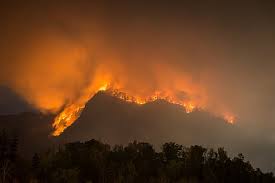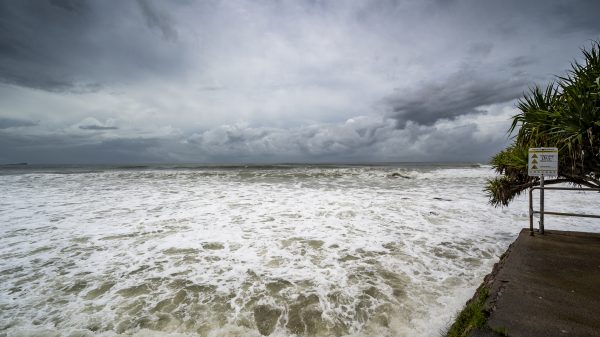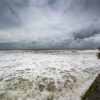CAROLINAS – As if recovering from Hurricane Helene wasn’t challenging enough, residents of North and South Carolina are now battling a new crisis—raging wildfires that are spreading rapidly across already devastated communities. Driven by strong winds, lingering hurricane debris, and ongoing drought conditions, multiple fires have now forced expanding evacuation orders across both states, leaving emergency crews racing to contain the flames.
Wildfire Crisis in North Carolina
In Polk County, North Carolina, three major wildfires—the Black Cove Fire, Deep Woods Fire, and Fish Hook Fire—have scorched over 3,300 acres, with no signs of slowing down. The Black Cove Fire alone has consumed 2,076 acres and remains completely uncontained as of Monday night. Authorities have issued mandatory evacuations for areas near the Henderson County line, where flames continue to threaten homes and businesses.
Evacuation shelters have been set up in Columbus, NC, to provide temporary housing for those forced to flee their homes. Firefighters are struggling against extreme conditions, as dry vegetation, fallen trees from Hurricane Helene, and high winds continue to fuel the inferno. Officials warn that these fires could spread even further if strong wind gusts persist in the coming days.
South Carolina Declares State of Emergency
Meanwhile, in Pickens County, South Carolina, the wildfire emergency has prompted Governor Henry McMaster to declare a state of emergency. A fast-moving blaze in the Blue Ridge Mountains has already burned through 300 acres, and officials fear it could grow larger with no containment in sight.
Over 100 homes are under voluntary evacuation orders, and residents are being warned to stay on high alert as shifting winds could push the fire toward populated areas. Firefighters are working tirelessly, but the steep terrain and dry conditions are making suppression efforts difficult.
What’s Making These Wildfires So Dangerous?
Several key factors are fueling the rapid spread of these fires across the Carolinas:
-
Hurricane Helene’s Aftermath: The storm left behind massive amounts of fallen trees and debris, which are now fueling wildfires.
-
Drought Conditions: Despite recent rainfall, the region is still experiencing drought, leaving forests dangerously dry.
-
Strong Winds & Low Humidity: Red flag warnings are in place due to gusty winds and low humidity, making it nearly impossible to stop the flames from spreading.
How Residents Can Stay Safe
Officials are urging people in affected areas to take the following precautions:
-
Follow evacuation orders immediately if instructed—don’t wait until it’s too late.
-
Limit outdoor activities to avoid breathing in smoke-filled air.
-
Have an emergency kit ready, including medications, important documents, and supplies in case of evacuation.
-
Monitor local news and alerts to stay updated on changing fire conditions.
What’s Next?
With weather conditions expected to remain dry and windy, firefighters are racing against time to prevent further devastation. Officials say the situation is evolving rapidly, and more evacuation orders could be issued at any time. Residents are urged to stay vigilant, take warnings seriously, and prepare for the worst as these fires continue to rage.











